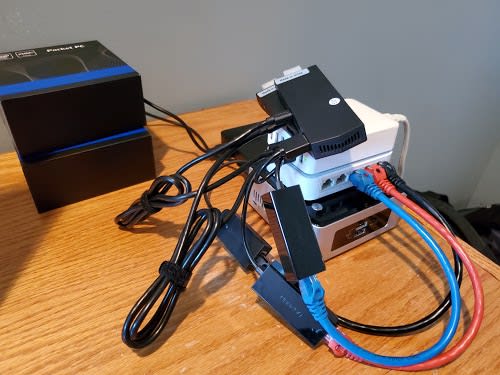I had previously built a compute cluster using Raspberry Pi mini-computers. A drawback that I had encountered was the ARM architecture that the Raspberry Pi uses. A lot of application developers don't support ARMhf or ARMV7 architectures.
Finally got around to publishing what I've been working on with my #RaspberryPi #Docker #ansible #mylittlerackofpis https://t.co/IHXL4izGnn
— Michael Glitzos (@mikeyglitz) January 3, 2018
Recently I came across this post from Hackernoon which explained how to make a DIY cluster using affordable stick-pcs. I decided to try building a compute cluster for the second time, but using stick pcs which I was able to affordably find on the internet.
My cluster will consist of the following nodes:
- Intel BOXNUC5CPYH NUC - Master
- 2x ACEPC W5 - Worker
The Intel NUC was a mini-computer which I had from a previous home lab set up. The NUC has the following specs:
- Intel Celeron N3050 - 2 cores 2.16 Ghz
- 8 GB DDR3
- 128 GB SSD
I've attached an additional 4TB USB HDD to for storage. I intend to use the master node as a network-attached storage (NAS) device as well.
The compute nodes have the following specs:
- Intel Atom z8350 - 4 cores 1.8 GHZ
- 2 GB DDR3
- 32 GB Internal SD Card
Since the resources on these mini computers is limited, I'll be using k3s as a lightweight alternative to kubernetes.
I also found that I receive better performance and stability using Debian over Ubuntu.









Latest comments (0)